The complete guide to creating good looking Facebook advertisements
At first, Facebook advertising seems to be an easy task. Just create a captivating post, aim for a significant audience group, put some money after it, and obtain new leads, right?
As we all are aware though, Facebook is no doubt a challenging place for marketers. Unless you’re a marketing magician, it is pretty hard to get people to buy from you the first time you wave to them in a Facebook ad. This is the reason why your Facebook ad image has to be visibly appealing. If it is not, then your probability of capturing clicks and conversion on Facebook becomes a long shot.
The human brain analyses and processes visual content 60,000 times quicker than the text. So what makes a captivating image for a Facebook ad? How can your Facebook ad stand out from the angelic cute babies, charismatic brides, and cherubic puppies on your prospects’ Facebook feed? We’ll cover all this and much more in this guide.

Facebook ad types and image size fundamentals
Facebook has in total five major advertisement formats that all have the varied technical requisites in terms of the size and aspect ratios that are prime for posting. These five formats include:
- Single image ads
- Single video ads
- Carousel ads
- Slideshow ads
- Canvas ads
Single image ads
This simple ad format contains a text, an image, a title, a link description, and a call-to-action button. This is an easily accepted and frequently used Facebook ad format. These ads are simple, basic, and prove to be successful as they are easily understood by the viewer. This ad format is very dynamic since with every single Facebook objective these ads can be exercised. These ads are powerful plus effective.
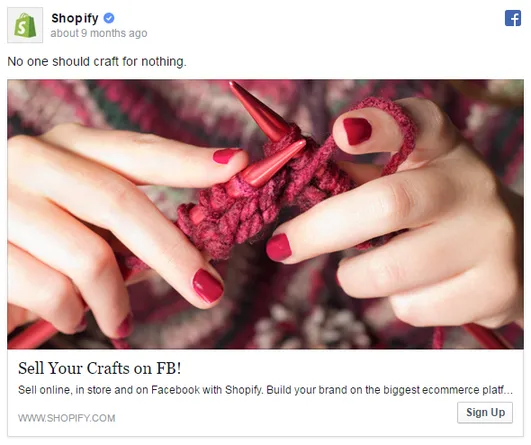
Here are the recommended specs for a single-image ad:
Image size: 1,200 x 628 pixels
Image ratio: 1.91:1
Text: 90 characters
Headline: 25 characters
Link description: 30 characters
Single video ads
As the name suggests, single video ads are a single video in the area where the picture/image generally is. According to a recent study, 45 percent of the people prefer to watch more than an hour of Facebook videos per week. This ad format proves to be efficient if we consider this fact.
Also, the maximum audience does watch Facebook videos without sound, so the use of captions in the videos is heavily recommended. Also, the time limit for one Facebook video ad is 60 minutes. The video should not exceed this limit.
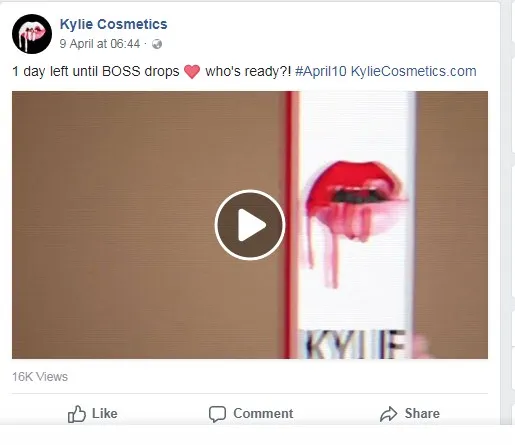
If you’re interested in opting the video ad format route, take a look at the recommended specs below:
Video format: .mov or .mp4 are preferable
Aspect ratio: 16:9
Resolution: at least 720p
File size: 2.3 GB max
Thumbnail image size: 1,200 x 675 pixels (the aspect ratio of the thumbnail should match that of the video)
Text: 90 characters
Headline: 25 characters
Link description: 30 characters
Carousel ads
Facebook carousel ads are one of the most innovative types of ad formats that permit the advertisers to showcase up to 10 products or pictures within a single ad unit. Each single product or image has its own description and the link that directs people to the landing page.
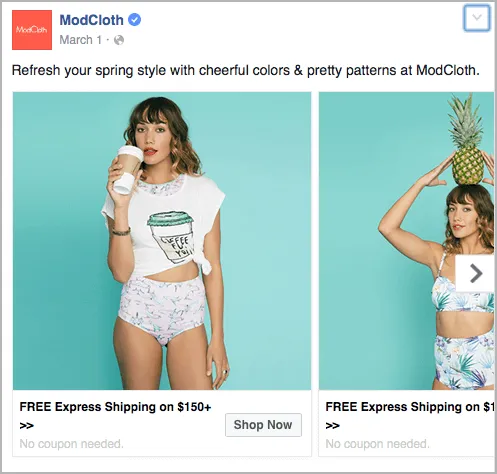
Check out the recommended specs:
Image size/thumbnail image size: 1,080 x 1,080 pixels
Image ratio/video aspect ratio: 1:1 (square)
Text: 90 characters
Headline: 40 characters
Link description: 20 characters
Slideshow ads
In 2015, two events took place in the Internet marketing scenario – video started earning popularity among Facebook users, and these users steadily started consuming the maximum of this video content on mobile. The video setup and its deviation from desktop windows to mobile phones presented a number of problems for advertisers. Many advertisers with lower budgets were not able to afford to compose and deliver video ads, and they also faced difficulty in delivering their respective ads to people residing in areas with very low wifi speeds and older mobile phone models.
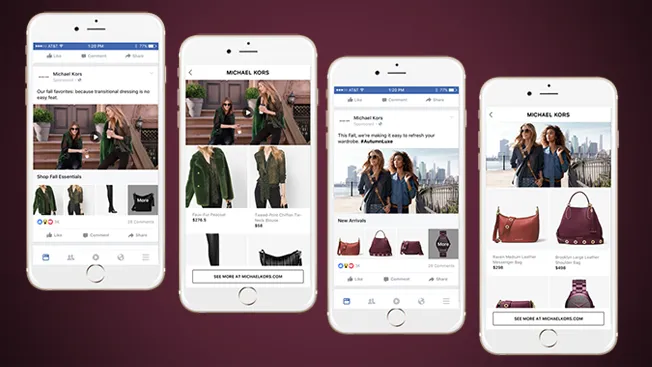
Slideshows can be as short as five seconds and as long as 50 seconds. Check out the recommended specs below:
Image size: 1,280 x 720 pixels
Image ratio: 16:9, 1:1, or 2:3
Text: 90 characters
Headline: 25 characters
Link description: 30 characters
Canvas ads
These are the latest types of Facebook ad formats. These ads look like simple image advertisements in the preview, but once the advertisement is clicked, the watcher is taken to an alluring, full-screen communication experience where they can easily engage with your website content. While these advertisements may feel pushy, like an unjustified ad commercial, the consumer can navigate away whenever they like. This particular ad format does require a considerably higher level of creativity.
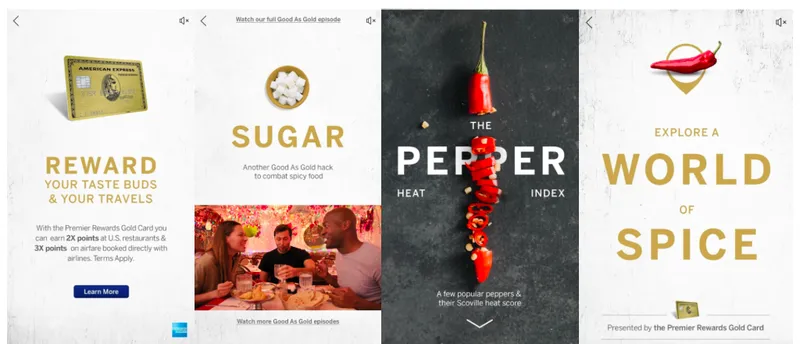
Best practices for Facebook ad images
Since Facebook has a huge audience belonging to every age group, it doesn’t matter whether you are selling shoes, clothes, dairy, or even software. Creating an ad which represents your products is a great thing and should be done with utmost care. Your success and downfall will be decided entirely on how beautifully and cleverly you can present your product. So, how will you do it?
Include humans, preferably happy ones
Are you aware of the fact that there is one definite part of our head that responds to nothing but faces? Human faces, especially happy faces, are paramount social tools as they appeal to emotion like no other part of the human body. This particular psychology has broadly been used for mercantile products, such as on the packaging of your favourite breakfast cereal.
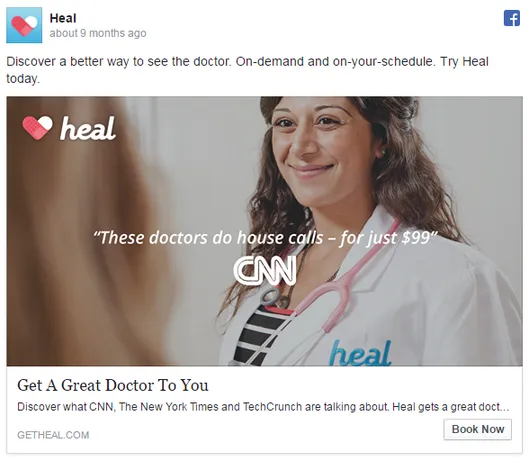
Use a contextually relevant image
In your Facebook ads, the kind of images you use is also important. Contextually relevant images are especially preferred if you want your Facebook ads to work. It is always better to select and include those images which properly deliver the message of your brand and depict the label well. Do avoid using random stock images.
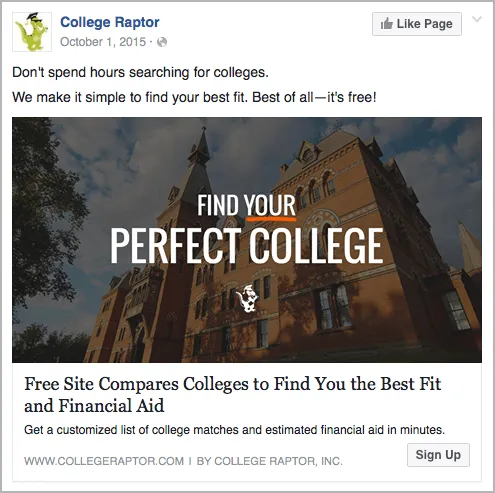
Simplicity is key
You should be smart and clever with the words that you put in your image. Keep it short and simple. Facebook has a restriction which states that you cannot use content covering more than 20 percent of a picture. So you need to be clever with your words. Keep it simple and easy for the viewer. Your ad image should entice the viewer to read your ad. After all, we all know that pictures speak more than words can say.
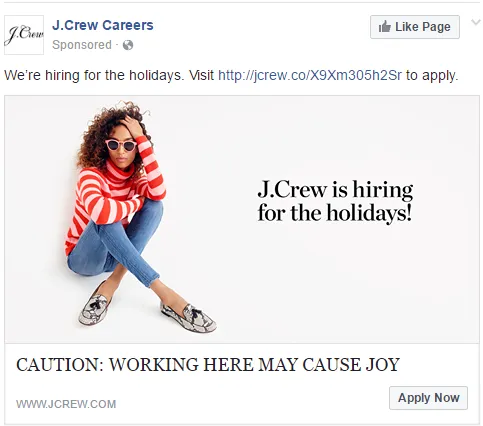
Don’t be afraid to use little pops of colour
Adding colour to your ads will definitely help attract attention amidst a cluster of boring greys, tans, and whites. Though you do not want to go overboard with your selected colour as this can annoy your audience, you should not be scared to use some pops of colour throughout your Facebook ad to help grab your audience’s attention as they browse through their respective Facebook feeds.
The finest way to achieve balance when it comes to ad colours is to keep the background simple and bright while blending the brighter colours throughout the Facebook ad. Tough Mudder does this with smiles and eye-popping orange below:
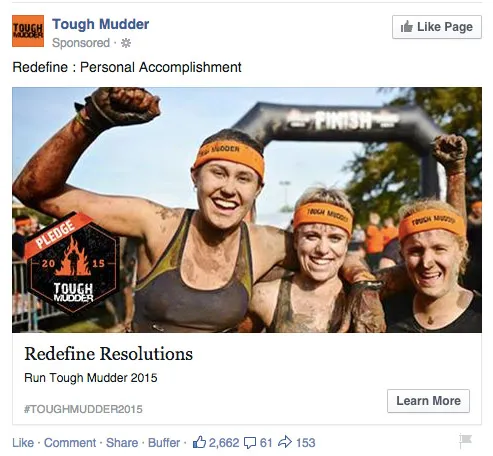
Make your ad copy short
When a proposed post has an ad copy that is very long-winded, Facebook cuts it down by adding a “Continue reading” link.
This may be okay if you are composing for an audience that already knows you well (think loyal customers). However, because Suggested Posts are shown to the audience who do not yet know you, they definitely won’t take the precious time to click “Continue reading” to check what you are willing to say.
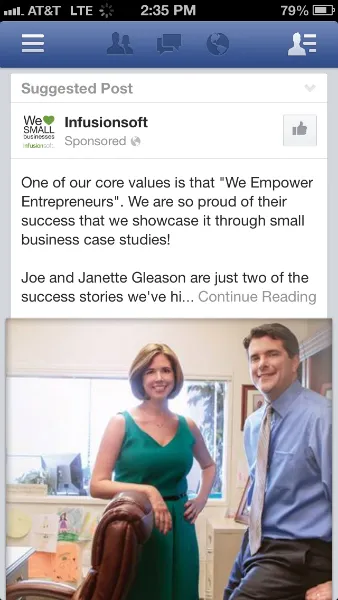
Facebook ads are a perfect tool to include in your digital marketing tool-set. Your best Facebook ads should be attention-grabbing and contain a powerful reason that entices your viewers to click on your ad.
In the end, what’s needed the most is a need to refresh, revitalize, and create the best Facebook ads that will work miraculously.
Sumit Ghosh is the Founder of PowerAdspy.
(Disclaimer: The views and opinions expressed in this article are those of the author and do not necessarily reflect the views of YourStory.)







